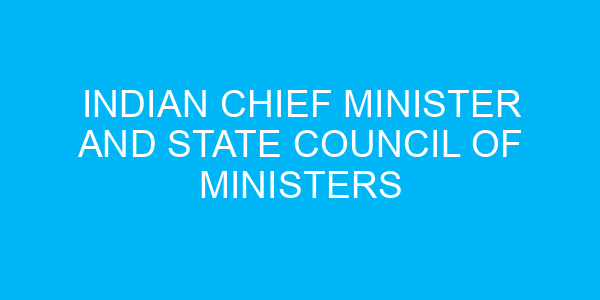106. The Chief Minister is responsible for the allocation and distribution of portfolios among the ministers in the Council of Ministers. The allocation of portfolios is based on the:
a) Chief Minister’s discretion
b) Governor’s recommendation
c) President’s approval
d) Legislative Assembly’s approval
107. The Chief Minister is the chief spokesperson of the state government and represents the state in various official functions and ceremonies. This represents the Chief Minister’s role as the:
a) Head of the state
b) Head of the legislature
c) Head of the judiciary
d) Head of the executive
108. The Chief Minister is responsible for coordinating and implementing the policies and programs of the state government. This signifies the Chief Minister’s role as the:
a) Chief policy maker
b) Chief legislator
c) Chief judge
d) Chief diplomat
109. The Chief Minister is accountable to the Legislative Assembly and is required to answer questions, participate in debates, and provide explanations for the government’s actions. This accountability ensures:
a) Transparency and democracy
b) Efficiency and productivity
c) Stability and security
d) Unity and diversity
110. The Chief Minister is responsible for the overall administration of the state and exercises control over the state bureaucracy. This signifies the Chief Minister’s role as the:
a) Chief administrator
b) Chief legislator
c) Chief judge
d) Chief diplomat




